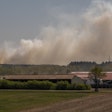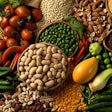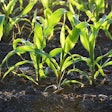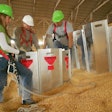
Usually by the timeFeed & Grain's editor sits down to write his or her note for the October/November issue, harvest is well under way and it's fairly obvious how grain handlers and merchandisers will navigate the coming months in light of either a bumper or bust crop.
I'm sorry, folks, but this year, I have no such insights. With a measly 7% of corn and just 3% of soybeans harvested as of the Sept. 23 USDA Weekly Crop Progress report, nobody is certain how this year's harvest will pan out.
Even with last year's drought-stricken crop, the 2013 harvest is still well behind 2012. But this came to no one's surprise, as it was almost doomed from the beginning by Mother Nature. First, she ushered in Spring 2013 with cooler than average temperatures across the entire country and healthy doses of rain in the Corn Belt, pushing planting back dangerously late in over-soaked areas.
But thanks to a mild summer, things started looking up, and the World Agricultural Supply and Demand Estimates report for August projected the 2013 corn crop at a record-breaking 13.763 billion bushels, a 2.98 billion bushel increase from 2012. The report estimated the 2013 corn yield at 154.4 bushels per acre. For a moment, all seemed well, and folks began to file away last year's drought and 2013's wet Spring as distant memories, looking ahead to a bountiful harvest.
然而,结束的夏天,美国农业部气象学家were warning that the early part of 2013 was merely a wet spell in what looked like a sustained drought pattern. Although September's WASDE report didn't reflect a major reduction in expectations, many analysts say the real pain will be felt in forthcoming reports.
And meanwhile that drought we thought was behind us is still haunting merchandisers, as Diana Klemme points out in her column, "East VS. West, Again." With about 4 billion bushels of unfilled space in the Western Corn Belt, grain handlers are in dire need of that healthy harvest USDA projected in August. Without it, they'll have a tough time getting their hands on supplies.
Klemme writes, "The relative imbalance in crops compared to space will impact basis again this year. Ethanol plants west of the Mississippi will again face the challenge of maintaining the steady corn pipeline needed to operate."
So, what is the weather expected to bring next? According to USDA, more record high-temperatures and an unpredictable hurricane season. To see what else is in store for fall 2013, go to www.FeedandGrain.com and enter search ID: 11150064. I'll give you a hint: USDA meteorologist Brad Rippey says "I don't think normal is in our vocabulary for this fall after what's happened this summer."
At least there is little chance of an early frost, meaning the harvest may go on late into the year, leaving open the door to hit September's crop estimates. I know my fingers are crossed.





















